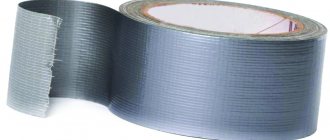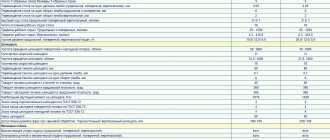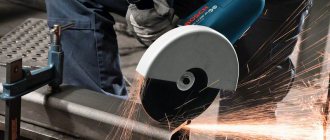Masking tape is a real salvation for construction and painting work. With its help, perfectly straight lines are created on all surfaces, it is resistant to chemicals and temperature changes, and can be removed from the treated areas carefully and without residue. Paper tape is used in many areas, is easy to use, and has a large number of varieties.
Masking tape - what is it and what is it for?
Masking tape is a product with an adhesive surface, its base is rough paper. It consists of two sides: on one of them there is rubber glue, on the second there is a layer of paper that absorbs all liquids or paint (corrugated is the base). The product has many positive characteristics: high elasticity, good gluing ability, ease of operation. Masking tape is easily removed and is used in conditions with high humidity. Let's look at what masking tape looks like: it's a roll of tape that can be painted in different colors, different widths and thicknesses.
The product has many positive characteristics: high elasticity, good gluing ability, ease of operation.
Areas of use
Modern paper-based masking tape has many useful features. First of all, it protects the fabric of walls, ceilings, mirrors and tiles during paint application procedures. This is convenient for decorative painting - the crepe is glued to the desired areas, and paint is applied on top. When the tape is removed, perfectly even geometric shapes remain. In construction, if it is necessary to make holes of different depths, masking paper tape is used as a limiter. The product is wound onto a drill or drill, limiting further drilling.
For decorative painting, the crepe is glued to the desired areas, and paint is applied on top. When the tape is removed, perfectly even geometric shapes remain.
It is convenient when measuring a large area with a measuring tape to attach its edge with a crepe. Painting tape 10 mm allows you to carefully and beautifully make markings: when gluing wallpaper, painting, on tiles, glass, dark and light surfaces. If glass breaks, simply use adhesive to pick up the pieces. During repair and construction work, a small life hack is used: put bolts, plugs, nuts on the tape - everything will be at your fingertips when installing at height or at home. Masking adhesive paper tape is applied around the perimeter of the entrance or interior door, protecting the door leaf and frame from the mounting foam.
To avoid staining the floor with construction waste, make an envelope from a sheet of paper and attach it using 10 mm wide construction tape to the wall. This design will collect all the dust and dirt, leaving the parquet clean. Small, lightweight tools and parts after repairs can be fastened together using tape. It is convenient to glue film or cardboard, joint to joint, and seal windows. The use of masking tape extends to almost all areas of life of a modern person.
It is convenient to glue film or cardboard, joint to joint, and seal windows.
If you need to glue parts of the packaging together, buy yellow or brown wide masking adhesive tape. Blue crepe is relevant in warehouses, for marking containers and products, at post offices or industrial production. The brown shade is ideal for camouflage and is resistant to sudden changes in humidity and temperature.
Extraordinary application
They also use tape in a non-standard way, collecting broken glass, small scattered elements of needles, and beads. When drilling into the wall, hang a funnel or newspaper envelope under the hole with adhesive tape so that flying debris does not accumulate on the floor.
In addition, they successfully implement:
- Sawing so that the boards are without chips;
- Restoration of books;
- Making patterns;
- Securing garlands for the holiday;
- Cleaning fabric from pellets and animal hair;
- Measurements alone, fixing a long tape measure by one edge;
- Precise drilling of slippery glass or mirror.
Samples are used to seal wooden windows during cold seasons and provide sealing of pipes, joints, and refrigeration units. To avoid damage during installation, the door panels are pasted over, and the transported furniture is wrapped in bubble wrap, securing it with crepe.
Pieces of adhesive substance can even stop bleeding from a small wound, if there is no first aid kit nearby, and remove splinters.
Necessary properties of masking tape
For comparison with other types of adhesive tape, the painting type with a paper base is distinguished by its individual properties. The product has many advantages:
- Large selection of sizes: there is 10 mm masking tape, thinner or thicker, different widths;
- Little weight;
- Relatively low price;
- High adhesion;
- Excellent strength – the tape is resistant to edge-type tears;
- Wide range of temperature conditions (from minus 10 to + 125 degrees Celsius);
- Resistance to changes in humidity and high frosts.
The tape can be combined with different types of paint products, parts, and components. It is simply and easily removed, the sticky residue is quickly wiped off from any surface. Good elasticity, can be used in any conditions.
The masking tape is simply and easily removed, the sticky mark is quickly wiped off from any surface.
Dyeing technology
Painting tape will be useful when creating an interesting decor using at least two colors. The sequence of painting and drawing on the walls may differ depending on the idea, but most often it is determined by the following standard steps:
- Choice of shades of the color palette.
- Creating a sketch of the future pattern.
- Drawing chalk borders on the wall to attach the tape.
- Applying masking tape.
- Painting the surface as planned.
- Dry the surface and remove the masking tape.
In addition, the tape can act as a stencil to create a pattern on a plain wall. To achieve stronger adhesion, it is recommended to smooth the surface of the masking tape with a plastic card.
Rules for using masking tape (crepe)
The product is applied only to a previously dried, degreased and clean surface. Be sure to take into account the air temperature - it should be positive, ideally room temperature.
Note! Construction tape must be removed after the time indicated on the package. Sometimes this is immediately after the end of the work process. Rubber adhesive bonds quickly and increases adhesion. After a while, it will not be possible to carefully remove the product.
The product is applied only to a previously dried, degreased and clean surface.
How to choose masking tape
We have already figured out what masking tape is, now we need to understand how to choose the right material. Consider the possibility of gluing dusty and dirty surfaces, quick removal after a long time. Check the thin masking tape and its quality: move the strip (no more than 4 cm), then press the same area firmly back and pull again. If you need to use effort when peeling it off again, feel free to buy a skein. Material that peels off easily is of poor quality.
Of course, it is not always possible to check 1 cm masking tape this way. Pay attention to the thickness of the ribbon. A suitable option is thickness parameters of 125, 135 or 140 microns. You can find such a product in construction stores and car repair shops. Shades of strong ribbons: brown, white, yellow. Painting tape 5 mm wide glues well and firmly secures all objects. The main criterion is high adhesion. Pay attention to how many meters there are in the masking tape - this determines how long it will last you.
Consider the possibility of gluing dusty and dirty surfaces, quick removal after a long time.
Criterias of choice
When choosing raw materials, they rely on width and length. The standard winding is 5 cm and 50 m. Wide elements are used to insulate windows, and narrow elements are used to decorate curved borders on elongated areas and to seal joints.
The tensile strength depends on the thickness. In everyday life, the optimal figure is 125 microns and above. Brand offers are a priority for professionals.
It is not recommended to exceed the application time, otherwise it will not be easy to remove the remaining glue.
Coatings are carefully prepared by puttingty and priming them.
- Follow the recommendations on the manufacturer's labeling. Freshly painted walls are dried for a day, or at worst, at least a few hours, and treated with tape for delicate surfaces, otherwise the result will be disappointing.
- It is better not to buy cheap products that can peel off when soaked in paint; they do not fit tightly and leave unpleasant smudges.
With the help of a universal assistant, many repair tasks are solved; it is indispensable for painting operations. Numerous offers on the modern market allow users to purchase the required masking tape that satisfies their needs and expectations.
How to remove traces after deletion
If you used 100mm wide masking tape, you need to know how to remove the remaining rubber adhesive. One effective way is to use simple office adhesive tape. The method works well with plastic items. Attach the material in place of the old one, press firmly. Tear it off with quick jerks several times. This is a soft effect on the plane, so it is impossible to damage or scratch the object.
One effective way to remove glue residue is to use simple office adhesive tape.
Second method: using a solution of baking soda and water. The mass should look like sour cream; the remaining glue is coated with it. You need to wait about 5 minutes, wipe off the composition with a cloth soaked in plenty of water. If necessary, the procedure is repeated. The residue is perfectly wiped off with products containing alcohol: pure ethanol, vodka, aftershave lotions. The latter must be selected without color so that it does not stain the area of application. The principle of operation is simple: a cloth or sponge is moistened in the substance, and the glue is wiped off with careful movements.
The mass should look like sour cream; the remaining glue is coated with it.
Masking tape is a material that leaves sticky marks that eat into plastic well. Plastic products do not tolerate contact with ethyl very well - be careful when cleaning with such compounds. Often deformation or change in shade occurs.
Simple medical alcohol is ideal for such purposes. After wiping the surface, wash it gently with household detergent.
Simple medical alcohol is ideal for such purposes.
It is recommended to use non-abrasive cleaning components. Gel, powder, liquid are allowed. Select a composition with microscopic crystals that cannot scratch the treated areas and act gently. A dishwashing sponge is slightly moistened with the mixture and the necessary areas are wiped. Rubbing is allowed only in particularly difficult places. A spray that works well for cleaning window glass. Simply spray it on and then rinse with clean water at room temperature.
A spray that works well for cleaning window glass.
If possible, use white spirit and gasoline, but remember - there should not be any impurities, because the coating can easily be damaged. In addition, chemical fumes have a negative impact on health. Test on a separate area to check the reaction. If after 10 - 15 minutes the shade and shape of the object has changed, you cannot continue working with liquids.
The situation is the same with acetone - it is a caustic substance that can damage the integrity of a layer of paint or varnish. Suitable for this work are napkins soaked in nail polish remover. To completely eliminate the risk of mechanical and chemical damage, take a composition without acetone.
Suitable for this work are napkins soaked in nail polish remover.
If the item is made of a material that can withstand hot air flows and temperatures, treat the area with a hairdryer or fabric steamer. Heat the tape, pull and it will easily come off completely. Do the same with the remaining adhesive - heat it up and remove it with a slightly damp cloth or microfiber. Steam exposure is an effective method. To do this, it is not necessary to use professional equipment - just breathe on the remaining substance and wipe it off.
If the item is made of a material that can withstand hot air flows and temperatures, treat the area with a hairdryer or fabric steamer.
Experts resort to another proven method - scrub the glue with oil (vegetable, olive). Painting tape 50 is generously moistened with oil, left for 15 - 20 minutes, then carefully peeled off. After this, the mark can be removed very simply with a dishwashing sponge. Next, the area is washed with water and detergent so that no greasy stain remains. It is more difficult to remove such a nuisance, so you should be especially careful.
Possible problems
At first glance, using masking tape is a simple task, but even then, mistakes are possible. Most often, most of them are associated with low-quality materials, expiration of the tape or incompetence of the craftsmen.
However, all of them can be avoided with knowledge of dyeing technology. Let's look at the most common of them.
The paint comes off along with the masking tape.
The most common problem is the use of low-quality paint. As a rule, even using the most expensive masking tape will not give a good result if a low-quality, cheap coating is used. Therefore, the quality and shelf life of the paint should be given no less attention than the quality and shelf life of the tape. Last year's putty from grandma's basement is unlikely to achieve a high-quality, even coating. Most likely, it will fall off immediately after removing the tape, requiring rework and additional financial costs.
Paint bleeding under the tape
Often a similar problem occurs when using cheap coatings. When using cheap paint, it is necessary to apply 4-5 layers for high-quality painting, but the tape is not able to withstand such exposure. As a result, the paper swells from excess paint and loses its adhesive properties. To prevent this from happening, it is recommended to give preference to paints only from well-known and trusted manufacturers.
Uneven paint line
As a rule, such a mistake often occurs among beginners in painting work. Lack of experience leads to crooked lines or uneven divisions of wall sections, even with excellent quality paint and tape. A possible cause could also be applying tape to paint that has not yet cured. As a result, when it is removed, the wet paint is smeared, distorting the lines.
Paint drips
If you are an experienced painter, but when painting, paint still bleeds under the tape, then most likely the problem is with the tape itself. Cheap masking tapes use low-quality materials, which leads to problems.
You should refrain from using such tape, but if there is nothing to replace it at the moment, then the main recommendation is not to leave the tape on the surface for a long time, but to remove it immediately after the paint has hardened.











